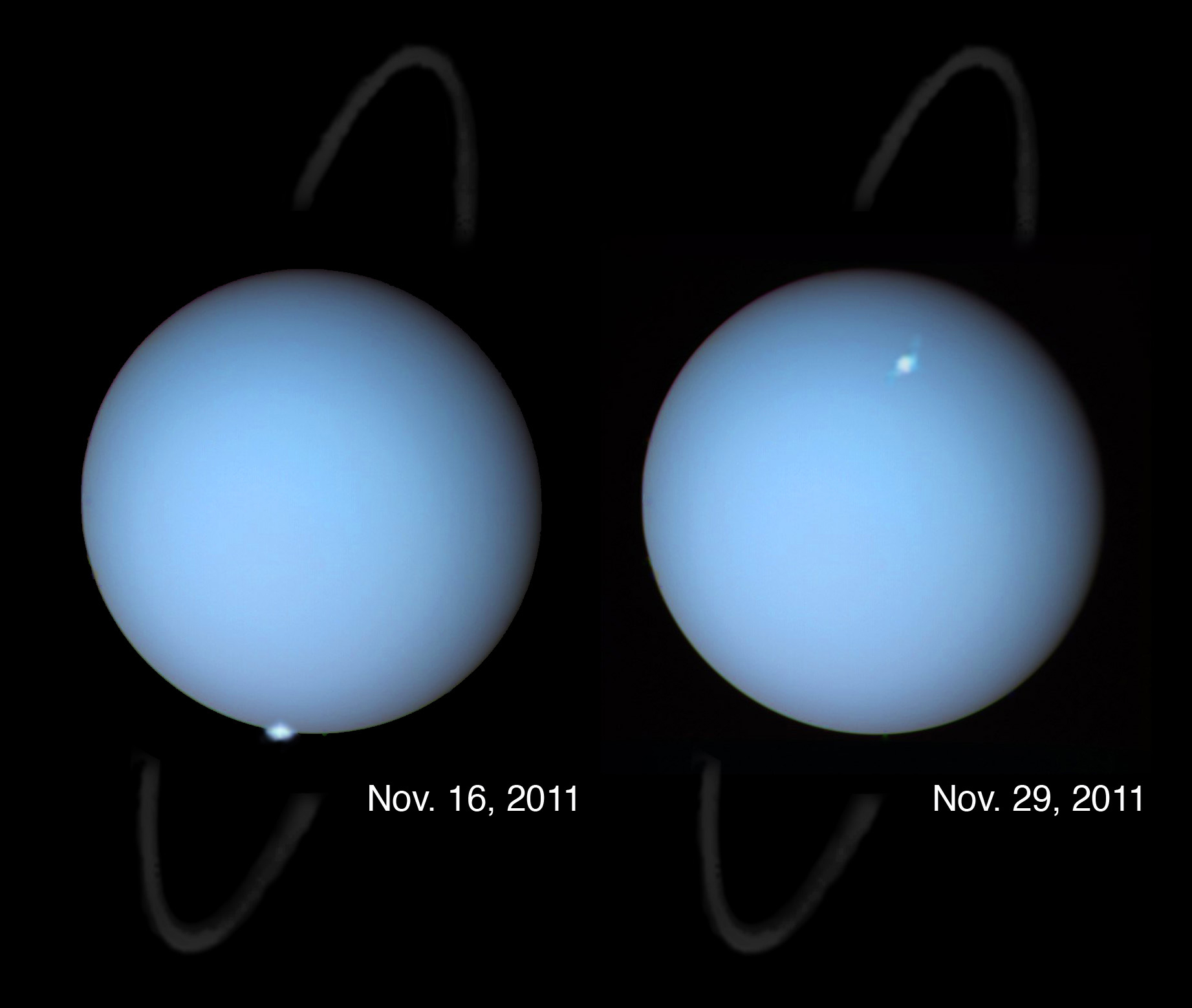
# Uranus’s Magnetic Enigma: Fresh Discoveries from Voyager 2’s Momentous Encounter
Years after NASA’s Voyager 2 spacecraft executed its singular flyby of Uranus, researchers have unveiled a remarkable finding. By analyzing archived information from the 1986 mission, scientists discovered that Voyager 2 recorded the planet’s magnetic field in an exceptional and atypical condition—a phenomenon that happens in less than 5% of instances. This insight, shared in *Nature Astronomy* in early 2024, carries significant consequences for our comprehension of the mysterious ice giant and may compel planetary scientists to reevaluate some established beliefs regarding Uranus’s magnetosphere.
### A Fortuitous Alignment?
Uranus, a remote and predominantly enigmatic planet situated 1.8 billion miles from Earth, was briefly visited by Voyager 2 in late January 1986. During this fleeting flyby, the spacecraft collected an abundance of data that has influenced our understanding of this frigid giant ever since. Nevertheless, we may not have fully grasped how much of an extraordinary “snapshot” Voyager 2 was capturing at that moment.
Jamie Jasinski, a space physicist and principal author of the newly published study, remarked:
> “Had Voyager 2 arrived merely a few days sooner, it would have recorded a vastly different magnetosphere at Uranus.”
Incredibly, the timing of the spacecraft’s passage coincided with a rare event in the planet’s dynamic magnetic field, which compresses the magnetosphere and modifies Uranus’s interactions with the rest of the solar system. The study indicates that this specific alignment occurs only 4% of the time, suggesting that Voyager 2 essentially captured a cosmic “snapshot” of Uranus during an unusual interval that might not reflect the planet’s standard behavior.
### Distinguishing the Encounter: Voyager 2 and the Compressed Magnetosphere
What precisely did Voyager 2 encounter during its historic journey past Uranus? And how might its findings have differed if it had arrived earlier—before the space weather anomaly occurred?
The event at hand involved a significant solar wind interaction that condensed Uranus’s magnetosphere, bringing it significantly closer to the planet than typically observed. The solar wind, a flow of charged particles continually emitted from the Sun, induces variations in magnetospheres, especially in planets like Uranus, where the magnetic axis is misaligned with its rotational axis, leading to a more intricate magnetic landscape.
Under such circumstances, rather than witnessing Uranus’s magnetosphere in its usual, expanded configuration, Voyager 2 captured it during a rare moment of compression. The contrast is notable. Data indicate that had the flyby occurred just one week prior, the spacecraft would have crossed the magnetic threshold at roughly 28 planetary radii (the distance from the core of Uranus to its outer boundaries). Instead, Voyager 2 encountered it at only 17 planetary radii—experiencing a much more compressed state, which transformed all observations it made.
This compression not only diminished the size of Uranus’s magnetosphere but also influenced other behaviors previously thought to be inherent characteristics of the planet.
### Rethinking Uranus’s Mysteries
For years, researchers have been baffled by some of the distinct traits of Uranus revealed through Voyager 2. Among the notable enigmas are the planet’s intense radiation belts and the unexpected scarcity of plasma within its magnetosphere. These findings prompted assumptions about Uranus having an unusually severe magnetic environment, but the recent discoveries indicate that this may not be the complete picture.
The extreme conditions observed during the 1986 flyby could have been temporary, caused by the compressed state of the magnetosphere rather than enduring properties of the planet. With only a limited segment of the overall narrative available, many critical aspects of Uranus may need to be reevaluated.
Jasinski and his colleagues stress that comprehending the full nature of Uranus’s magnetic environment is essential, especially as researchers intensify efforts to send new missions to the planet and its potentially ocean-harboring moons. If the 1986 data was acquired during a statistically rare occurrence, forthcoming missions could yield data about Uranus that appear drastically different from those of Voyager.
### Implications for Future Exploration
These findings bear significant consequences for upcoming missions to Uranus, which ranks high on NASA’s list of future exploratory targets. Grasping the fluctuating nature of Uranus’s magnetosphere will be vital for interpreting incoming data from any future endeavors. Knowing precisely when to examine the planet and how to differentiate between long-term patterns and short-term anomalies could be crucial in planning experiments and navigating spacecraft trajectories.
A primary focus of new research could be Uranus’s moons, particularly Miranda, Ariel, and Titania, which are believed to host internal oceans. Considering the close relationship between magnetospheres and planetary moons, possessing a comprehensive understanding of how Uranus’s magnetic environment evolves over time could significantly influence studies regarding the habitability of these moons.